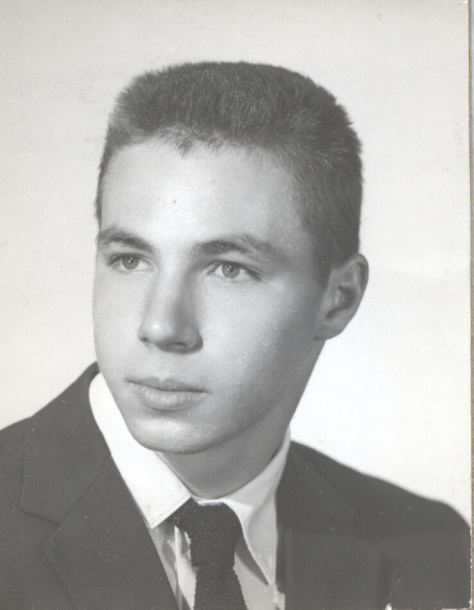Dancing with the Dead (30 page)
Read Dancing with the Dead Online
Authors: John Lutz

Occasionally she’d go dancing.
American: One of the two widely recognized dance styles, officially sanctioned for competition by the National Dance Council of America.
Arm check: Dance lead in which the man checks his partner’s momentum by placing his palm against her shoulder or upper arm.
Back-leading: Occurs when the partner ostensibly being led, and usually moving backward, is actually doing the leading.
Balance step: Sometimes called a hesitation, in which dancers pause for a beat or more either for effect, or to regain balance or timing.
Basic step: The simple step which serves as the foundation for a dance, often the starting point for more complex steps.
Bolero: Latin dance variation of the rumba, done to slower beat.
Box step: Basic step for several dances, in which dancers move between the corners of an imaginary square or rectangle on the floor.
Bronze category: The division of competitive dancing above Newcomer and below Silver.
Cha-cha: Latin dance with a doubling of dance rhythm on every fourth beat.
Check: A break and reversal in a dance’s momentum.
Contrabody: The twisting of a dancer’s torso to place opposite hip and shoulder over moving foot.
Corte
: A tango maneuver in which the man, moving backward one step, dips the woman, then raises her.
Count: Repetitive numerical patterns a dancer uses to maintain rhythm.
Cross-over: Dance maneuver in which partners turn away from each other until they are standing side by side, stepping through with the inside foot. Done often in cha-cha and mambo.
Cuban motion: A technique for exaggerated rhythmic shifting of weight and settling of the hip that emphasizes the Latin beat and is essential in most rhythm dances.
Dance frame: The basic posture that will be maintained throughout the dance, regardless of position in relation to the dancer’s partner.
Dance position: The starting position assumed by partners in relation to each other before they begin to dance. It varies at least slightly for most dances.
Dance shoes: Ballroom shoes with suede soles. Women’s high-heeled shoes have the heel set in more toward the center of the foot than do street shoes. There are specialized shoes for some dances.
Develope
: A hesitation step during which the woman slowly raises and lowers one leg, calf extended and toe pointed.
Fan: (also called flare) A step in which the dancer swivels on one foot with the free foot extended to the rear.
Flick: A quick backward kick from the knee.
Fox-trot: One of the smooth dances, done gracefully to a relatively slow beat.
Gold category: The highly skilled competition division directly above Silver.
Hesitation: Dancer pauses for a beat, sometimes longer.
International: One of the two dance styles sanctioned for official competition.
Jive: Faster, more animated version of swing.
Latin shoes: Any dance shoes constructed and styled for Latin competition.
Line of dance: The counterclockwise direction, or flow, of the general dance, even while the rotation of various dancing couples might be clockwise within that flow. Also a term of reference for dancers indicating a position on the dance floor (facing line of dance, facing away from line of dance, etc.).
Lead: The physical signaling that determines dance direction or maneuver.
Mambo: Rhythm dance during which dancers pause and hold each number one beat.
Merengue: Latin dance done to rapid beat without syncopation.
Newcomer: The lowest category of competition dancing. Newcomers, however, are, like other dancers, allowed to compete in higher categories.
One beat: The beat marking the beginning of a unit of music.
Parallel hesitation: Smooth dance step in which both partners pause for a beat or more while parallel to each other.
Paso doble
: Latin dance in which the male emulates the movements of a bullfighter, the woman the motion of his cape. Danced only to the music traditionally played as a prelude to bullfights.
Promenade position: Slightly open dance posture, heads turned in the direction of partners’ clasped hands, that allows both partners to move simultaneously at a sideways angle.
Promenade turn: An abrupt turn at the end of a step in promenade position, used to change direction in tango.
Pivot: A swivel on the ball of one foot, free foot forward or back, in which the dancer rotates half a turn on a fixed vertical axis.
Rhythm dances: Dances done to fastest beat or in syncopation, most commonly the Latin dances (other than tango), swing, and jive.
Rise-and-fall motion: The rhythmic rising and lowering of dancers during smooth dances, the waltz in particular, that lends flow and elegance to their progress across the floor.
Rock step: A simple forward or backward step in place, accompanied by a weight shift that suggests a rocking motion.
Rumba: A slow and graceful Cuban dance done to syncopated rhythm.
Rumba breaks: A step in which the partners angle away from each other briefly in unison, to side-by-side position, while maintaining arm or hand contact.
Samba: An African dance modified in Brazil, done to fast, syncopated rhythm.
Silver: Dance competition category between Bronze and Gold.
Smooth dances: Dances that travel along line of dance, usually to slower rhythm, in which grace and precision are emphasized. Includes waltz, fox-trot, tango, Viennese waltz, and quickstep.
Spin turn: A turn in which the dancer rotates in fixed position on a vertical axis.
Swing: Rhythm dance, done in single, double, or triple time, featuring spins, underarm turns, and sometimes acrobatic steps.
Tango: Slow, romantic Latin dance originated in Argentina.
Triple-time swing: Swing dance in which two beats are divided into three steps.
Underarm turn: Turn in which one partner revolves beneath the raised arm of the other, maintaining hand contact.
Walk-around turn: Turn in which the dancer uses foot movement to rotate rather than spinning on an axis.
Waltz: Smooth dance in 3/4 time which turning and rise-and-fall motion are important.
John Lutz is one of the foremost voices in contemporary hard-boiled fiction.
First published in
Alfred Hitchcock’s Mystery Magazine
in 1966, Lutz has written dozens of novels and over 250 short stories in the last four decades. His earliest success came with the Alo Nudger series, set in his hometown of St. Louis. A meek private detective, Nudger swills antacid instead of whiskey, and his greatest nemesis is his run-down Volkswagen. In his offices, permeated by the smell of the downstairs donut shop, he spends his time clipping coupons and studying baseball trivia. Though not a tough guy, he gets results. Lutz continued the series through eleven novels and over a dozen short stories, one of which—“Ride the Lightning”—won an Edgar Award for best story in 1986.
Lutz’s next big success also came in 1986, when he published
Tropical Heat
, the first Fred Carver mystery. The ensuing series took Lutz into darker territory, as he invented an Orlando cop forced to retire by a bullet that permanently disabled his left knee. Hobbled by injury and cynicism, he begins a career as a private detective, following low-lifes and beautiful women all over sunny, deadly Florida. In ten years Lutz wrote ten Carver novels, among them
Scorcher
(1987),
Bloodfire
(1991), and
Lightning
(1996), and as a whole they form a gut-wrenching depiction of the underbelly of the Sunshine State. Meanwhile, he also wrote
Dancing with the Dead
(1992), in which a serial killer targets ballroom dancers.
In 1992 his novel
SWF Seeks Same
was adapted for the screen as
Single White Female
, starring Bridget Fonda and Jennifer Jason Leigh. His novel
The Ex
was made into an HBO film for which Lutz co-wrote the screenplay. In 2001 his book
The Night Caller
inaugurated a new series of novels about ex-NYPD cops who hunt serial killers on the streets of New York City, and with
Darker Than Night
(2004) he introduced Frank Quinn, whose own series has yielded five books, the most recent being
Mister X
(2010).
Lutz is a former president of the Mystery Writers of America, and his many awards include Shamus Awards for
Kiss
and “Ride the Lightning,” and lifetime achievement awards from the Short Mystery Fiction Society and the Private Eye Writers of America. He lives in St. Louis.
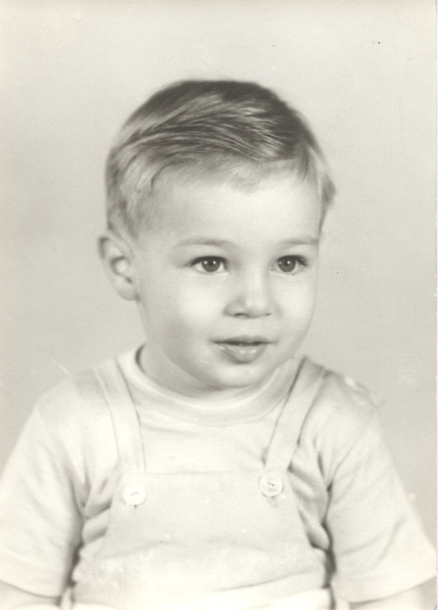
A two-year old Lutz, photographed in 1941. The photograph was taken by Lutz’s father, Jack Lutz, who was a local photographer out of downtown St. Louis.
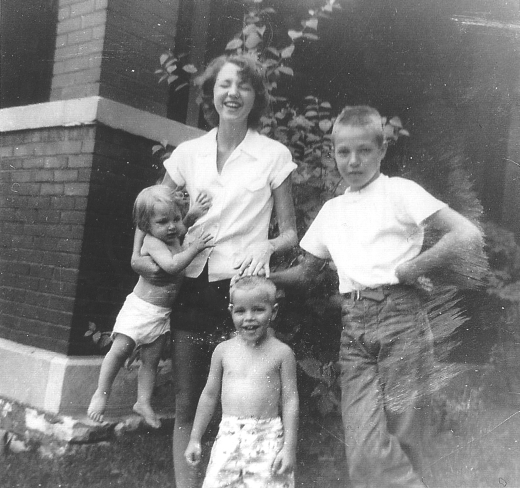
A young Lutz with his little brother, Jim, and sisters, Jacqui and Janie.
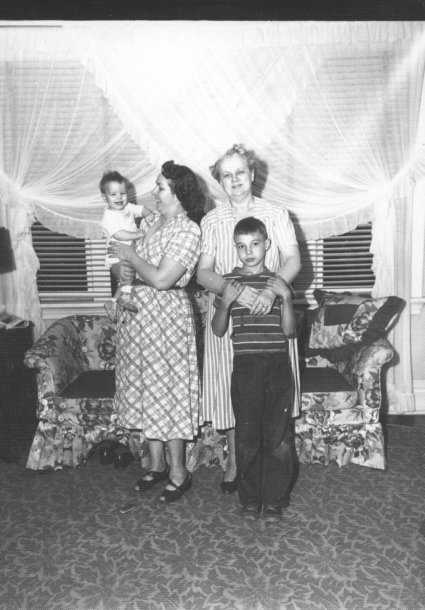
Lutz at ten years old, with his mother, Jane, grandmother, Kate, and brother, Jim. Lutz grew up in a sturdy brick city house that sat at an incline, halfway down a hill; according to Lutz, this made for optimal sledding during Missouri’s cold winters.
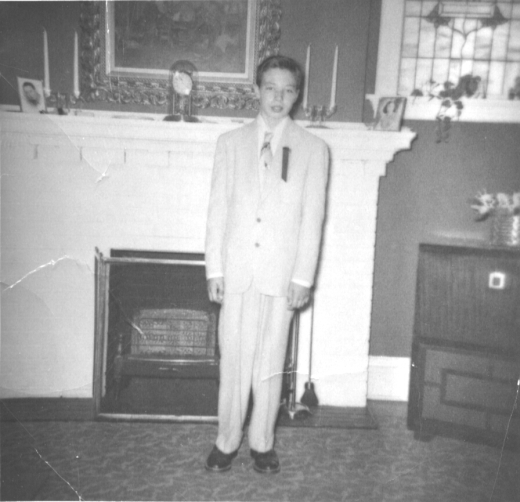
Lutz in his very first suit, purchased for his grade school graduation.
